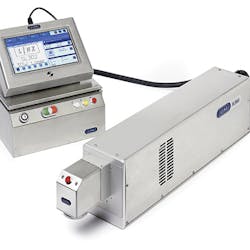Stand-up pouches, one of the fastest growing trends in the drink packaging industry, are often made from flexible polyethylene (PE), polyethylene terephthalate (PET), or foil, and key markets around the world are opting for this form of packaging for their delicious drinks.
Once just a packaging choice for non-carbonated soft drinks, we are now seeing mineral water brands, non-carbonated sports drinks, and wine companies opting for pouches. But one of the biggest pouch-use trends in the last four years has been cocktail mixes, with a growth in sales that has rocketed to 300 million units per year!
One such brand is Funkin Cocktails, whose cool, ready-to-pour cocktail mixers have established themselves across the UK, Europe, and more recently in the US, where the pouches were quickly embraced by A-list bars, thanks to their long shelf life and labor savings (FIGURE 1).
Pouches are a great choice for products with a long expiry period—what's more, most pouches are recyclable. Key pouch design features include twist-off tops, spouts, handles, and even carabiners, giving consumers choice and drink producers an opportunity to distinguish themselves in a crowded market.
Benefits for packagers?
A key benefit of pouches is the ability to fit more units in the same space-pouch packaging weighs far less than rigid packaging types such as cans and bottles, while still being able to hold equivalent volumes of liquid. Using less and lighter-weight material allows for lower shipping costs, both financially and in terms of cost to the environment. With consumers now more aware of the environmental impact of goods, the ability to create lighter-weight products in this way is ideal for brands wishing to showcase their commitment to environmental responsibility.
Future of the drink pouch
Drink packagers and brand managers are set to continue to opt for stand-up pouches and demand worldwide is set to rise 6.2% year on year, reaching an expected value of $37.3 billion in 2018—just three years from now! Research from the Freedonia Group suggests that the fastest growth is set to be in China and other developing nations, offering great opportunities for export brands.
With numerous benefits and exciting features, you may see stand-up pouches within your manufacturing environment in the near future. A key consideration should be whether your current production line has the right coding equipment in place. The long shelf life of pouches require coded information, such as batch number and expiry date information, to be permanent—unable to be rubbed off over time. Also, ongoing improvements are expected to be made on the barrier film substrates of pouches, so coding and marking machines need to keep up and still code effectively when materials change.
Currently coated films are made from polyvinylidene chloride (PVdv) or the cheaper option of ethylene vinyl alcohol (EVOH). Neither of these films allows carbonated drinks to be stored in a pouch due to escaping gases. Similarly, pouches cannot be used for products that are hot-filled—but with improvements in heat tolerance, these will no longer be limitations.
Laser coder capability
Consider whether your coder will be able to cope with changing substrates and developments in the drink industry. In applications such as this where running costs are particularly important, laser coding machines can reduce costs substantially, as they use no consumables. Better still, laser tube life is up to 45,000 hrs.
The Linx SL302 laser coder is able to mark a wide variety of surfaces at high speed (FIGURE 2). Its intuitive user interface is touch-screen and allows you to quickly and simply switch between codes. The Linx SL302 can meet coding requirements as they change—such as changes in line speed, code complexity, or material types—with no additional investment needed.
This article was provided by Katy Crouch on behalf of Linx Printing Technologies; www.linxglobal.com/en-gb/.

